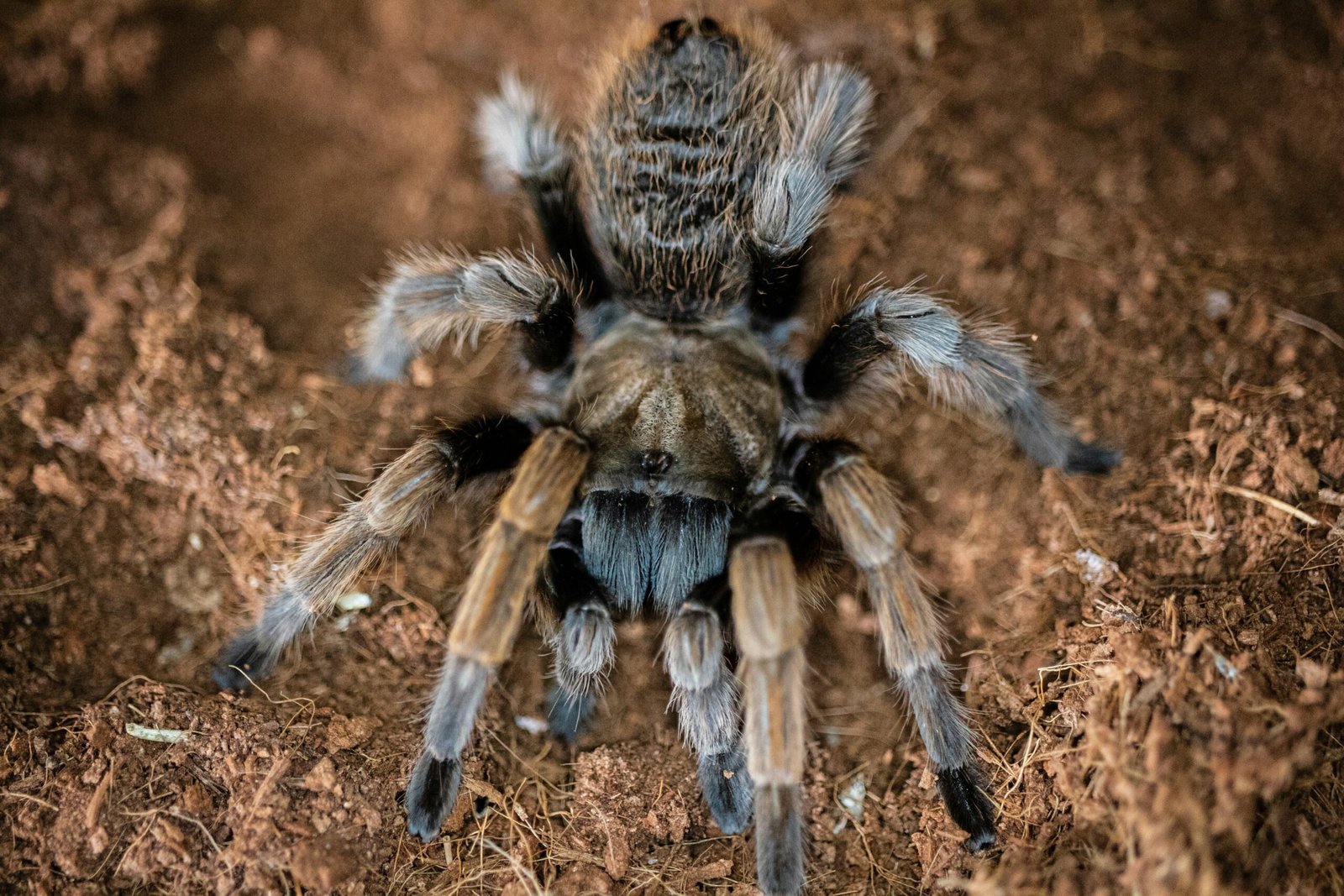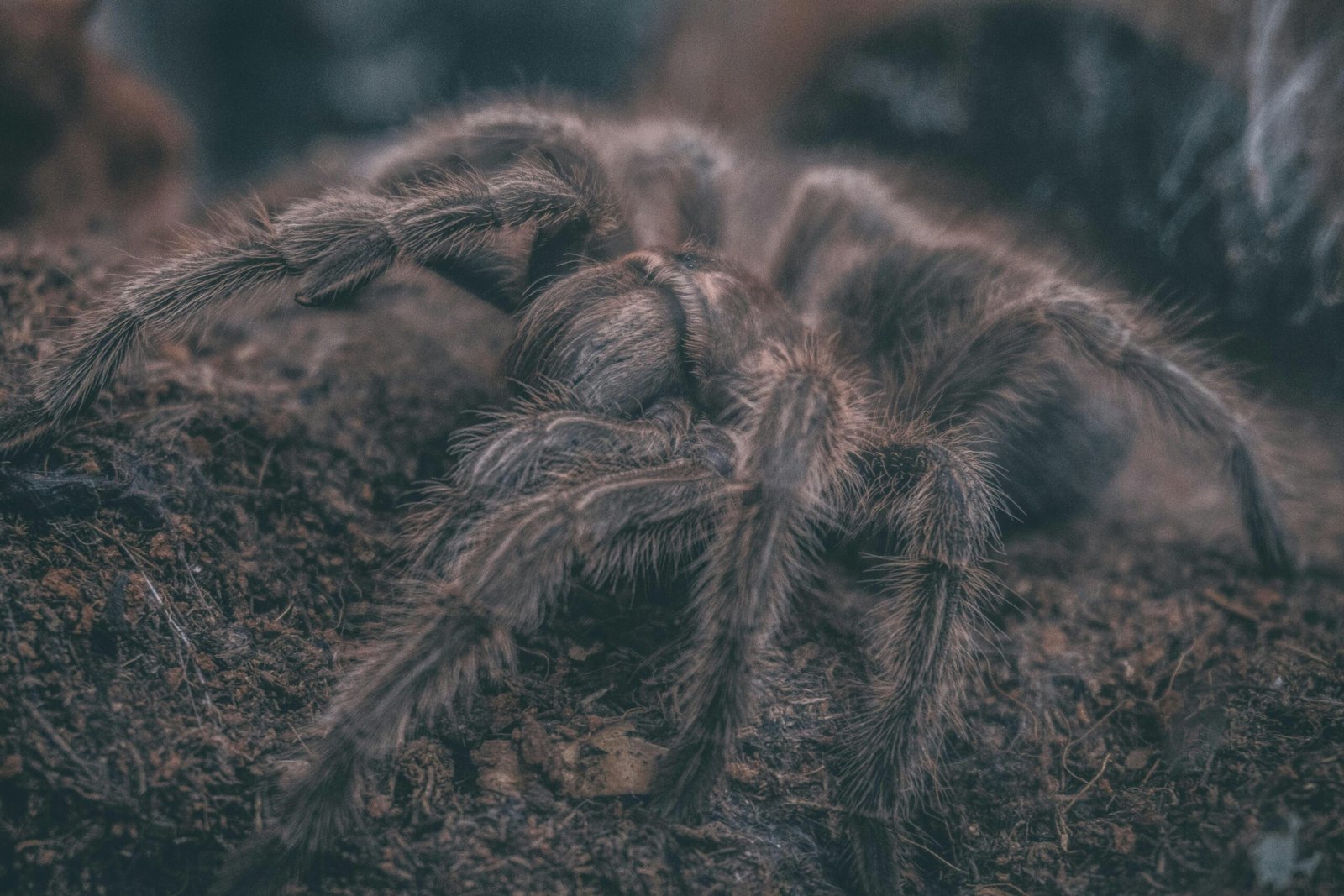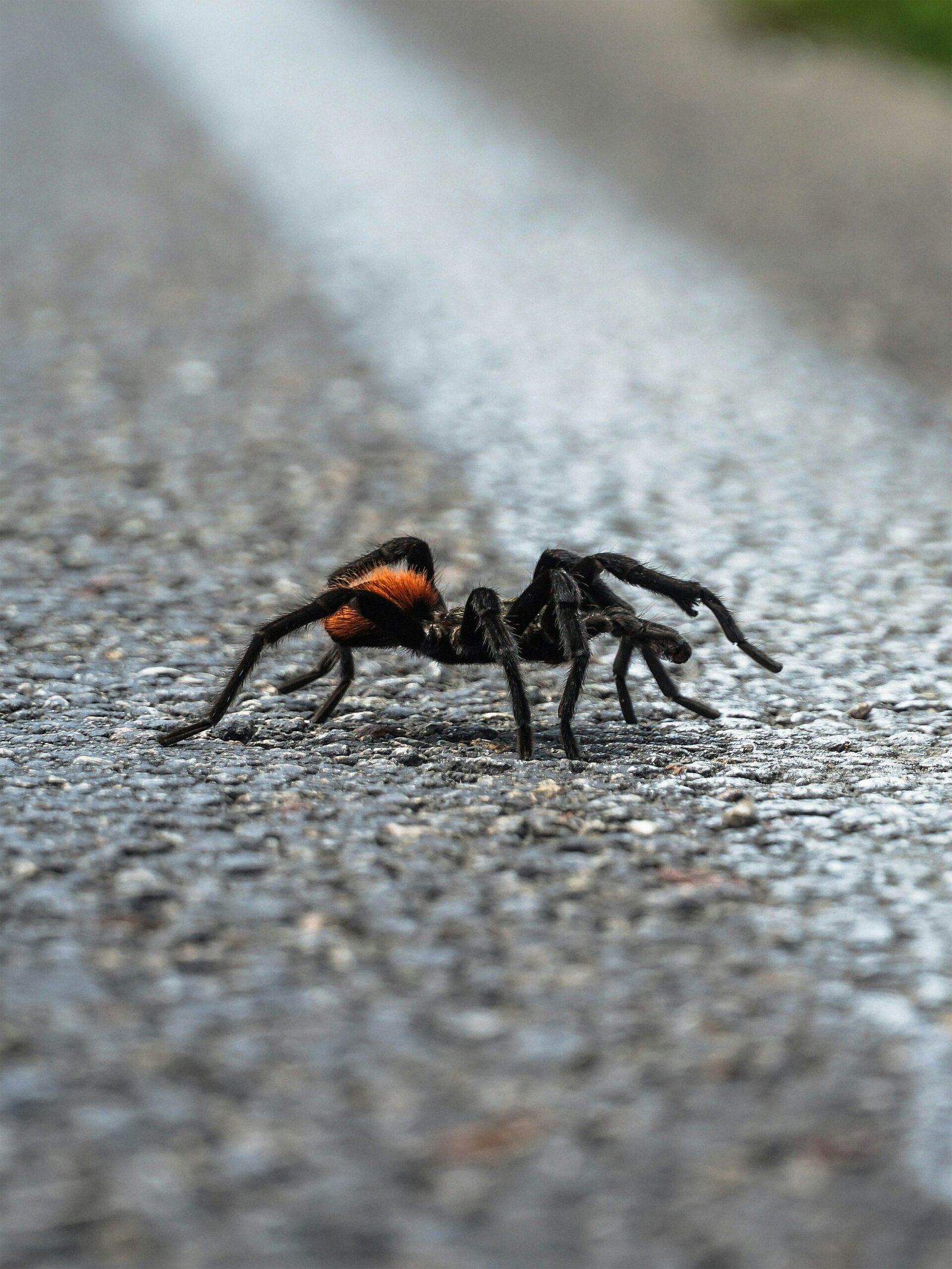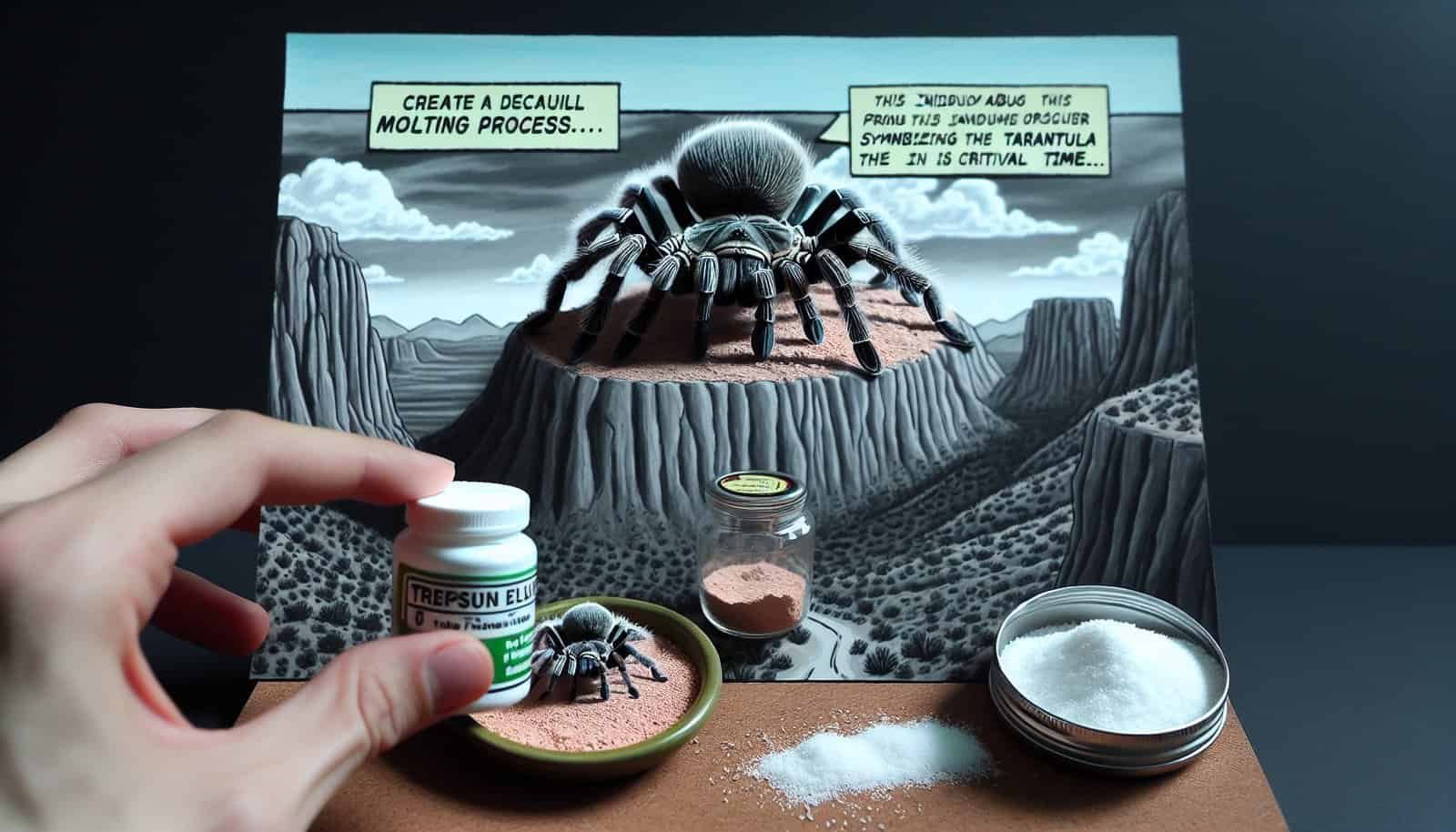So, you’ve found yourself with a tarantula in your care, and now it’s going through the molting process. You may be wondering, “How do I handle this situation?” and “Should I remove any uneaten prey?” Well, fear not, because in this article, we’ll guide you through the steps of handling a tarantula molting process and provide insights on whether or not you should remove uneaten prey during this time. By the end, you’ll feel confident and knowledgeable in caring for your eight-legged friend during this delicate phase.

Tarantula Molting Process
Tarantula molting is a crucial process in the life of these fascinating creatures. Understanding how to handle the molting process and caring for your tarantula during this time is essential to ensure its health and well-being. In this article, we will explore the various aspects of the tarantula molting process, from signs of an impending molt to creating a suitable molting environment. We will also discuss the importance of removing uneaten prey and provide tips on finding a balance between feeding and molting. Lastly, we will touch upon common concerns and precautions, as well as mistakes to avoid during the molting process. By following these guidelines, you can provide a safe and comfortable environment for your tarantula throughout its molting journey.
Understanding the Molting Process
Tarantula molting, or ecdysis, is the process by which a tarantula sheds its old exoskeleton and develops a new and larger one. This process is necessary for the tarantula’s growth and allows for increased mobility and overall health. During molting, the tarantula will undergo several distinct stages, including the creation of a molting mat and the actual shedding of its exoskeleton. It is crucial to be aware of these stages and understand the signs that indicate your tarantula is about to molt.
Signs of an Impending Molting
Before the actual molting process begins, your tarantula will exhibit certain behaviors and physical indications. These signs can vary between tarantula species, but some common indicators include reduced appetite, a darker and shrunken abdomen, and increased webbing activity. Additionally, you may notice a slight change in the tarantula’s behavior, such as increased hiding or a general slowdown in movement. It is essential to monitor your tarantula closely for these signs to prepare for the molting process adequately.
Creating a Suitable Molting Environment
To ensure a successful molting process, it is crucial to create a suitable environment for your tarantula. This includes providing adequate humidity, temperature, and a quiet and disturbance-free area. Tarantulas require a humid environment during molting, as it helps soften their old exoskeleton for easier shedding. You can achieve this by misting their enclosure with water or using a humidity gauge to maintain an appropriate level.
A quiet and disturbance-free environment is equally essential, as any stress or disturbance during molting can lead to complications. Choose a location for the enclosure that is away from high-traffic areas and loud noises. Also, avoid frequently handling or disturbing your tarantula during the molting process. These precautions will help create an optimal environment for your tarantula to molt successfully.
Researching Tarantula Molting
Before your tarantula goes through the molting process, it is essential to conduct thorough research. Each species of tarantula might have specific requirements and behaviors during molting, so educating yourself on these details is crucial. Explore reputable sources such as books, online forums, or websites dedicated to tarantula care. By understanding the specifics of your tarantula’s molting process, you can provide the necessary care and support.
Gathering the Necessary Supplies
To properly care for your tarantula during the molting process, it is important to gather the necessary supplies in advance. This includes a suitable molting enclosure, a hygrometer to monitor humidity levels, and appropriate substrate for the enclosure. Depending on the species, you may also need heating elements, such as an undertank heater or a heat lamp. It is essential to consult reliable sources or seek advice from experts to determine the specific supplies you will need for your tarantula’s molting process.

Creating a Molting Enclosure
A separate molting enclosure is recommended for your tarantula during the molting process. This enclosure should be spacious enough for your tarantula to move around comfortably, as they can potentially rupture their exoskeleton if confined in a small space. The enclosure should also have proper ventilation and be well-sealed to maintain humidity levels. Provide a thick layer of suitable substrate, such as peat moss or vermiculite, to replicate their natural habitat. This will help your tarantula feel secure and provide a suitable surface for molting.
Observing the Tarantula’s Behavior
During the molting process, it is crucial to observe your tarantula’s behavior closely. After creating a suitable molting enclosure, place your tarantula inside and allow it to settle in. Avoid disturbing or handling your tarantula during this time, as this could cause stress and potentially interrupt the molting process. Instead, observe from a distance and monitor its progress. Pay attention to any changes in behavior, such as increased webbing or stationary movement, as these are indicators that the molting process is underway.
Providing a Quiet and Disturbance-Free Environment
Throughout the tarantula molting process, it is essential to provide a quiet and disturbance-free environment. Limit any noise or vibrations in the area surrounding the molting enclosure. This includes minimizing foot traffic, television volume, or any other activities that could potentially disturb your tarantula. Keeping the environment calm and peaceful will ensure that your tarantula can focus on the molting process without any unnecessary stress.

Monitoring the Tarantula’s Progress
As your tarantula goes through the molting process, it is crucial to monitor its progress. Wait patiently until the molting process is complete before attempting to handle or disturb your tarantula. During this period, your tarantula is incredibly vulnerable, and any interruptions can lead to complications or even death. Once the molting process is complete, you can carefully remove the old exoskeleton from the enclosure, taking care not to damage the newly formed, delicate exoskeleton underneath.
Understanding Tarantula Feeding Habits
To determine whether you should remove uneaten prey during the molting process, it is important to understand tarantula feeding habits. Tarantulas are opportunistic feeders and can go for weeks or even months without eating. Additionally, some tarantulas may prefer live prey, while others readily consume pre-killed prey. Understanding your tarantula’s feeding habits will help you make informed decisions regarding its diet during the molting process.
The Importance of Removing Uneaten Prey
Removing uneaten prey is crucial for maintaining the overall health and well-being of your tarantula, especially during the molting process. If left uneaten, prey items can pose a threat to your tarantula if they become aggressive or injure the vulnerable tarantula during molting. Additionally, decaying prey can lead to bacterial or fungal growth, potentially causing infections or other health issues. Regularly removing uneaten prey helps ensure a clean and hygienic environment for your tarantula.

Removing Prey before Molting
It is advisable to remove any uneaten prey before your tarantula enters the molting process. As mentioned earlier, the molting process is a vulnerable time for your tarantula, and any potential threats can be detrimental. By removing uneaten prey, you eliminate the risk of aggression or injury from prey items. This precautionary measure allows your tarantula to focus solely on molting without any disturbances or threats.
Observing the Tarantula’s Feeding Habits
During the molting process, it is important to continue observing your tarantula’s feeding habits. Some tarantulas may continue to eat leading up to their molt, while others may refuse food entirely. By closely monitoring your tarantula’s feeding habits, you can gain insights into its molting timeline and make informed decisions about removing uneaten prey. However, it is crucial not to disturb or stress your tarantula during this time, as it can interfere with the molting process.
Removing Uneaten Prey at Appropriate Times
To maintain a balance between feeding and the molting process, it is essential to remove uneaten prey at appropriate times. If your tarantula has refused food for an extended period leading up to molting, it is advisable to remove any uneaten prey from the enclosure. However, if your tarantula continues to eat, it is best to remove uneaten prey a few days before the expected molt. This allows your tarantula sufficient time to process and digest its last meal before entering the molting process.

Ensuring Proper Nutrition and Health
Finding a balance between feeding and the molting process is crucial for ensuring your tarantula’s proper nutrition and overall health. Tarantulas require a well-rounded diet consisting of a variety of prey items to meet their nutritional needs. Adequate nutrition is essential for a successful molting process and overall vitality. Consult reputable sources or seek advice from experts to determine the appropriate feeding schedule and prey items for your tarantula species.
Consulting an Expert
If you have any concerns or questions regarding the tarantula molting process, it is always advisable to consult with an expert. A professional tarantula veterinarian or an experienced tarantula keeper can provide valuable insights and guidance. They can offer advice specific to your tarantula’s species and address any unique challenges you may face. Seeking professional advice can help ensure the well-being of your tarantula during the molting process.
Getting Guidance from Tarantula Enthusiasts
Another valuable source of information and guidance during the tarantula molting process is other tarantula enthusiasts. Online forums and communities dedicated to tarantula care are abundant and offer a wealth of knowledge. Engaging with fellow tarantula keepers can provide different perspectives and experiences that may be beneficial to your own journey. These communities can also provide emotional support and reassurance during potentially stressful times.
Joining Tarantula Communities
To further enhance your knowledge and understanding of the tarantula molting process, consider joining tarantula communities or clubs. These organizations often offer educational resources, workshops, and opportunities to connect with like-minded tarantula enthusiasts. Participating in such communities can help you stay updated with the latest research, techniques, and advancements in tarantula care. By joining tarantula communities, you can surround yourself with a network of individuals who share your passion and dedication to tarantula care.
Avoiding Disturbing the Tarantula
One of the most important precautions during the molting process is to avoid disturbing your tarantula. As mentioned earlier, stress or interruptions during this vulnerable time can have severe consequences. Resist the temptation to handle or disturb your tarantula, and ensure that any interactions with the enclosure are kept to a minimum. By allowing your tarantula to molt undisturbed, you provide it with the best chance of a successful molt and overall well-being.
Recognizing Signs of Complications
While most tarantulas molt without any issues, it is essential to recognize signs of complications that may arise during the molting process. Some common signs include prolonged immobility, difficulty shedding, or abnormal discoloration on the newly formed exoskeleton. If you notice any of these signs or have concerns about your tarantula’s health, it is crucial to seek veterinary assistance promptly. A veterinarian experienced in exotic animal care can properly diagnose and treat any potential issues that may arise.
Knowing When to Seek Veterinary Help
Determining when to seek veterinary help during the tarantula molting process can be challenging. It is always better to err on the side of caution and seek professional advice if you have any concerns. They can provide guidance based on their expertise and ensure that your tarantula receives the necessary care. Remember that tarantulas are delicate creatures during the molting process, and any complications should be addressed by a qualified professional promptly.
Overfeeding the Tarantula
During the molting process, it is crucial to avoid overfeeding your tarantula. Overfeeding can lead to excess weight gain and potentially hinder the molting process. A tarantula with an overly full abdomen may find it difficult to move and shed its exoskeleton properly. Follow appropriate feeding guidelines for your tarantula’s species and adjust the feeding schedule accordingly during the molting process.
Disturbing or Handling the Tarantula
As emphasized throughout this article, it is essential to avoid disturbing or handling your tarantula during the molting process. Tarantulas are vulnerable during this time, and any interference can lead to complications or even death. Resist the urge to check on your tarantula frequently or attempt to handle it. Allow it to molt undisturbed, and observe from a distance to monitor its progress. Patience and restraint during this period are crucial for the well-being of your tarantula.
Exposing the Tarantula to Stressful Conditions
Exposing your tarantula to stressful conditions is another mistake to avoid during the molting process. Tarantulas are sensitive creatures, and any stressful stimuli can disrupt or delay the molting process. Avoid sudden loud noises, temperature fluctuations, or other stressful events near the enclosure. By providing a calm and stable environment, you give your tarantula the best chance of a successful molt.
Providing a Safe and Comfortable Environment
In conclusion, caring for your tarantula during the molting process requires diligence and attention to detail. Understanding the molting process, recognizing signs of an impending molt, and creating a suitable molting environment are crucial steps in providing the best care possible. Removing uneaten prey, finding a balance between feeding and molting, and seeking professional advice when needed are all essential aspects of caring for your tarantula during this time. By avoiding common mistakes, such as overfeeding, disturbing the tarantula, or subjecting it to stressful conditions, you can ensure that your tarantula molts successfully and maintains optimal health. Remember, providing a safe and comfortable environment, maintaining a proper feeding schedule, and balancing nutrition and the molting process are key to keeping your tarantula happy and healthy.
